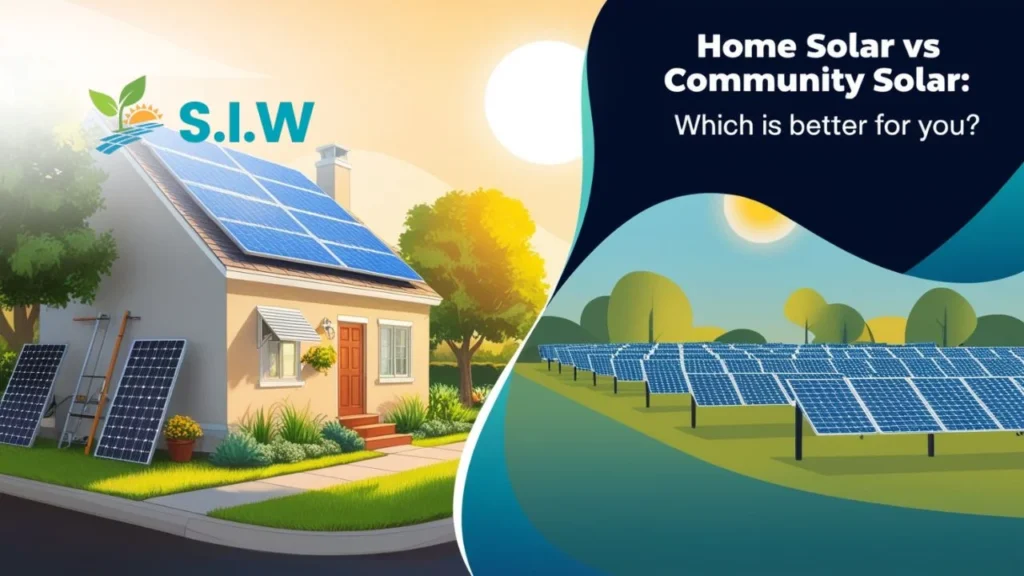As the world increasingly shifts towards sustainable energy solutions, solar power stands out as a prominent choice for both environmental and economic reasons. Among the options available, home solar systems and community solar programs are two popular choices, each offering unique benefits and considerations. In this comprehensive guide, we will delve into the intricacies of both options, helping you make an informed decision about which solar solution best fits your needs.
Understanding Home Solar Systems
What Are Home Solar Systems?
A home solar system involves installing solar panels directly on your property, typically on the roof. These systems convert sunlight into electricity through photovoltaic cells, providing power for your home. The primary components of a home solar system include:
- Solar Panels: Capture sunlight and convert it into direct current (DC) electricity.
- Inverter: Converts DC electricity into alternating current (AC) electricity, which powers your home.
- Battery Storage: Stores excess energy for use when sunlight is not available.
- Mounting Hardware: Secures the panels to your roof or ground mount.
Benefits of Home Solar Systems
- Energy Independence: By generating your own electricity, you reduce reliance on the grid and protect yourself from rising energy costs.
- Cost Savings: Over time, home solar systems can significantly reduce your electricity bills. With various incentives and rebates, the initial investment can be offset.
- Increased Property Value: Homes with solar installations often have higher resale values.
- Environmental Impact: Home solar systems contribute to reducing your carbon footprint by utilizing renewable energy.
Considerations for Home Solar Systems
- Upfront Costs: The initial investment for purchasing and installing solar panels can be substantial, though financing options are available.
- Installation Space: You need sufficient roof space or land for panel installation.
- Maintenance: While solar panels require minimal maintenance, occasional cleaning and inspection are necessary.
Exploring Community Solar Programs
What Are Community Solar Programs?
Community solar programs, also known as shared solar or solar gardens, allow multiple participants to benefit from a single solar array. This setup typically involves a large solar installation managed by a third party, where individuals or businesses purchase or lease a share of the solar power produced. Key components include:
- Solar Array: A large-scale solar installation that generates electricity.
- Subscription or Ownership: Participants subscribe to a portion of the solar array’s output or purchase shares in the project.
- Utility Integration: The power generated is fed into the local grid, and participants receive credits on their electricity bills based on their share.
Benefits of Community Solar Programs
- No Installation Required: Participants do not need to install solar panels on their property, making it an accessible option for those without suitable roof space.
- Lower Costs: Community solar programs often require lower initial investments compared to home solar systems.
- Flexibility: Ideal for renters or those who cannot install solar panels on their own property.
- Shared Savings: Participants benefit from the collective savings generated by the solar array, often with a predictable cost structure.
Considerations for Community Solar Programs
- Availability: Community solar programs may not be available in all regions or may have limited capacity.
- Subscription Terms: Understanding the terms of your subscription or ownership agreement is crucial, including any potential fees or contract lengths.
- Savings Variability: Savings can vary based on the size of the solar array, energy consumption, and local utility rates.
Comparing Home Solar and Community Solar
Cost Analysis
Home Solar Systems require a larger upfront investment but can offer greater long-term savings and increased property value. Community Solar Programs generally involve lower initial costs and are more accessible for those without suitable installation space but may offer less control over the energy savings.
Flexibility and Convenience
Home solar systems provide greater independence and control over your energy production. In contrast, community solar programs offer flexibility without the need for personal installation but can be subject to the limitations and terms set by the program provider.
Environmental Impact
Both options contribute to reducing carbon emissions, though the scale of impact may vary. Home solar systems directly reduce your household’s carbon footprint, while community solar programs contribute to broader renewable energy goals.
Making Your Decision
Choosing between a home solar system and a community solar program depends on various factors, including your financial situation, property characteristics, and energy needs. Evaluate your options based on the following criteria:
- Budget: Consider your ability to invest in a home solar system versus the cost of joining a community solar program.
- Property: Assess whether your property is suitable for solar panel installation or if community solar offers a more viable option.
- Energy Goals: Determine your long-term energy goals and how each option aligns with them.
By carefully weighing these factors, you can make a well-informed decision that aligns with your financial, environmental, and lifestyle goals.








